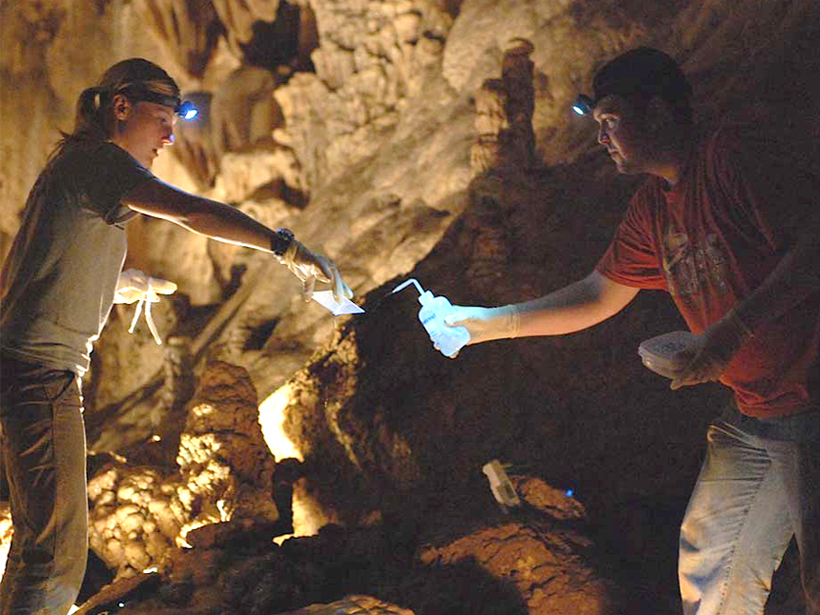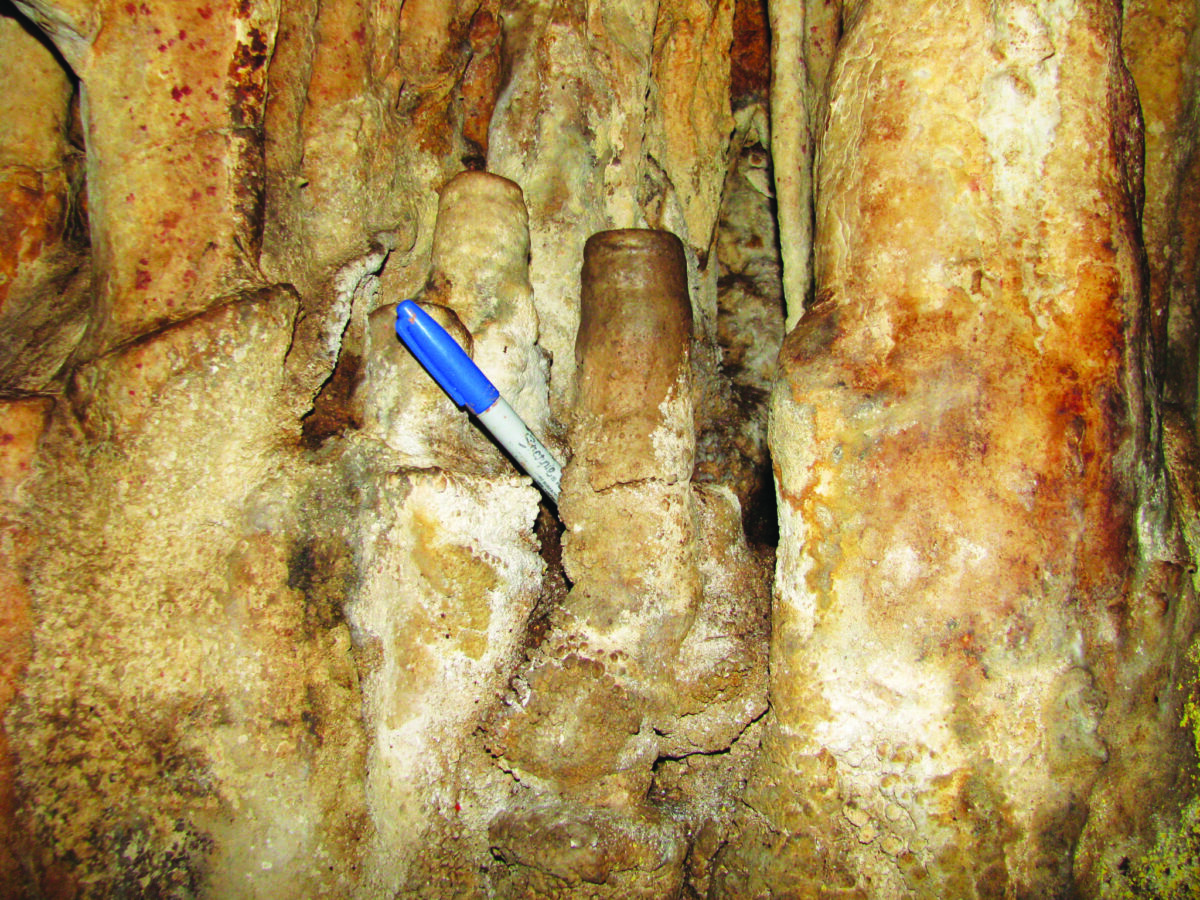Armed with laser technology, scientists now plot and study vivid maps of underground spaces with stunning accuracy. But the equipment is costly, fragile, and hard to maneuver through tight passages.
caves
Posted inNews
How Bat Breath and Guano Can Change the Shapes of Caves
Researchers working in caves in Borneo and elsewhere are finding evidence that biological processes shape many tropical caves by slowly eating away at surrounding rock.
Posted inNews
Cave-Dwelling "Slime Curtains" Cycle Nitrogen and Iron
In a cave accessible only by daredevil divers, extraordinary microbial colonies metabolize nitrogen and iron nutrients and possibly remove pollutants from water.
Posted inResearch Spotlights
Cave "Breathing" Affects Mineral Growth and Climate Clues
A new global model suggests how and where air flow in caves affects the growth of cave mineral deposits that scientists use to reconstruct ancient climates.
Posted inNews
Chinese Cave Inscriptions Tell Woeful Tale of Drought
Researchers use the graffiti to extrapolate future drought risk in central China.
Posted inResearch Spotlights
A Dearth of Hurricanes Cannot Explain Maya Collapse
Mud layers in a stalagmite from a cave on the Yucatán Peninsula show hurricane activity was steady or elevated throughout the Maya collapse.






